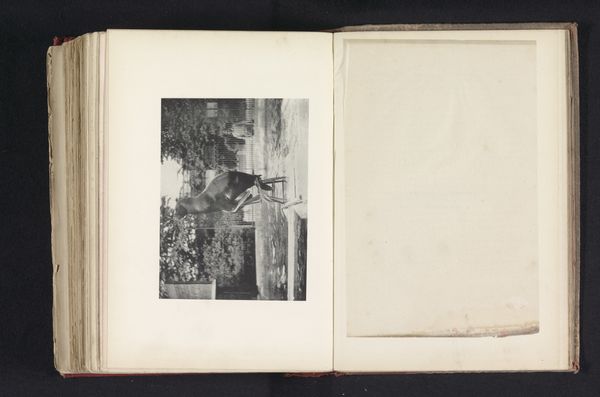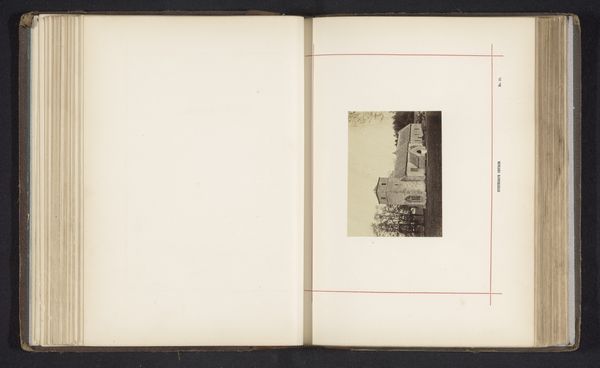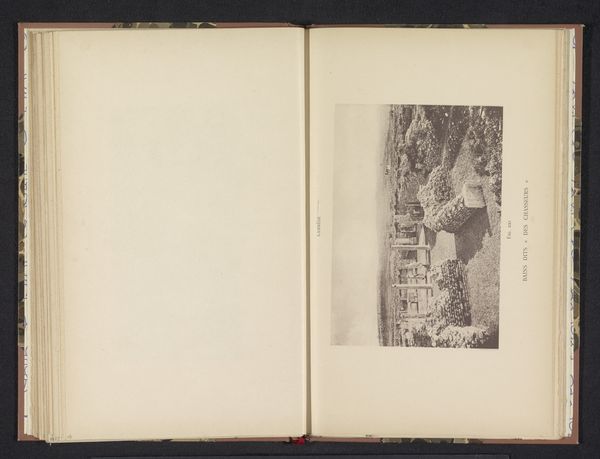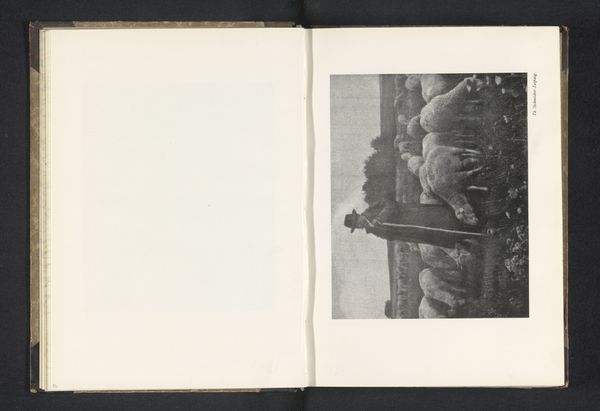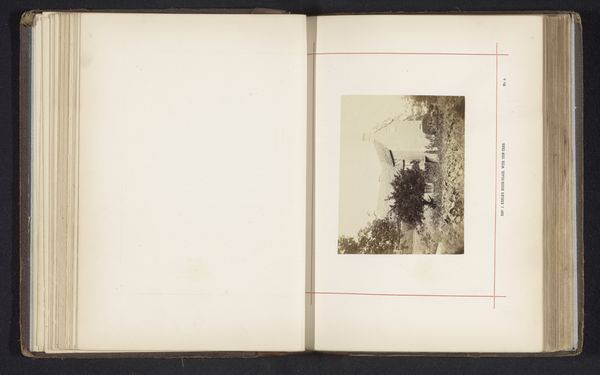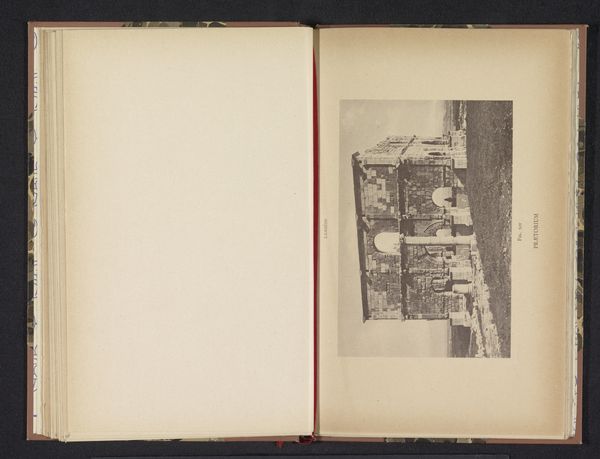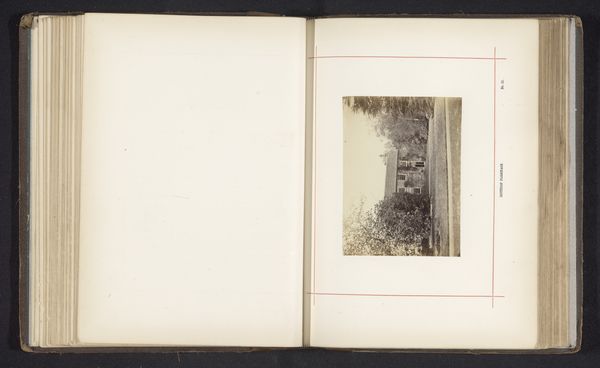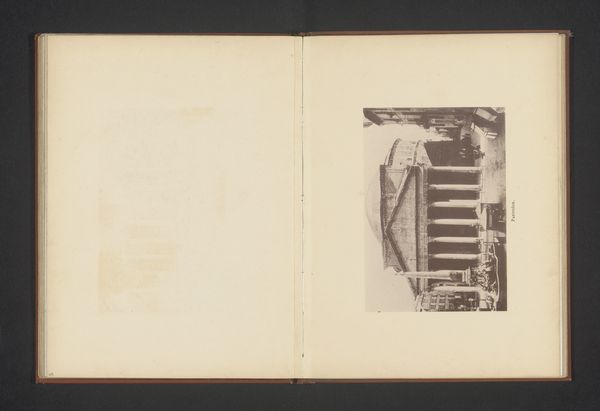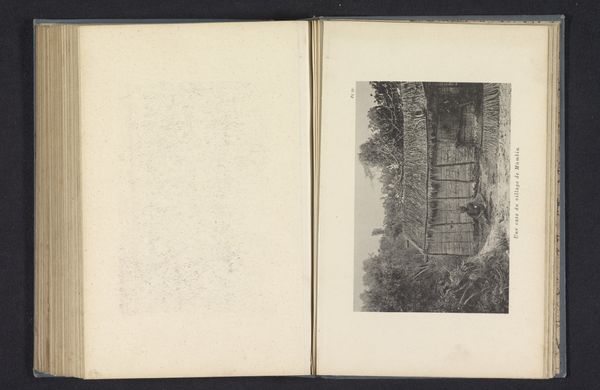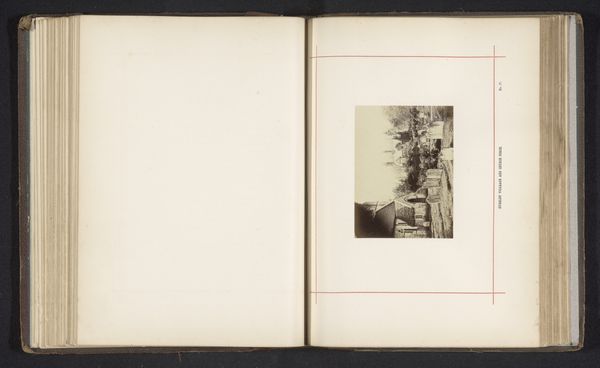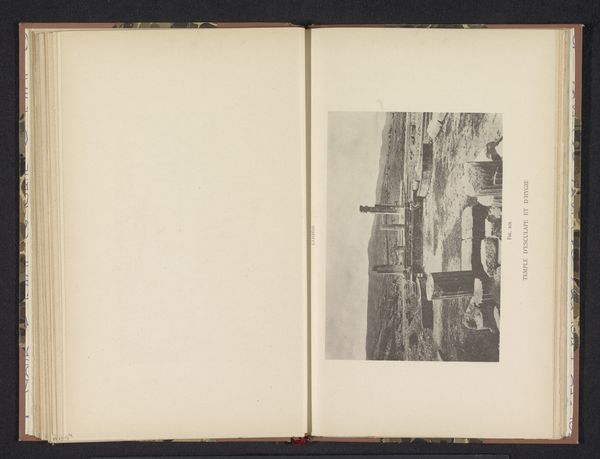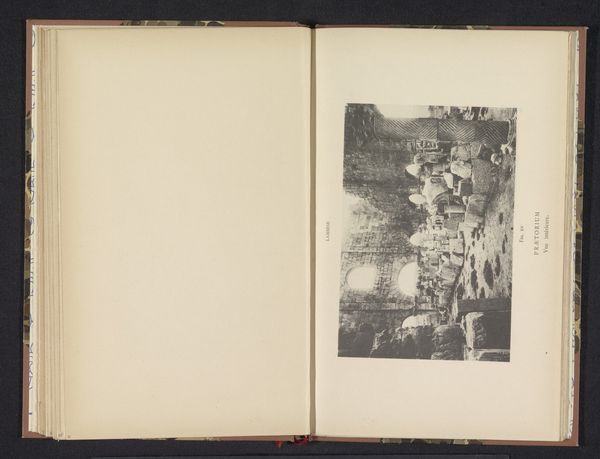
print, photography, gelatin-silver-print, albumen-print
#
ink paper printed
# print
#
landscape
#
photography
#
coloured pencil
#
geometric
#
ancient-mediterranean
#
gelatin-silver-print
#
cityscape
#
albumen-print
Dimensions: height 106 mm, width 153 mm
Copyright: Rijks Museum: Open Domain
Curator: What strikes me immediately is the strong horizontal composition and the textural contrast of the stone in this printed image. Editor: Indeed. The print before us is titled "Gezicht op de Romeinse ruïne van een openbare latrine in Timgad," dating from before 1894. It provides an interesting insight into Roman social infrastructure, particularly sanitation. Curator: Sanitation? The stark geometry made me think more of abstract minimalist forms. Those rectangular stones and their stark, repetitive patterns are visually compelling. Editor: Well, while its aesthetic appeal is undeniable, it's important to understand that Timgad, located in present-day Algeria, was a Roman colonial town. This latrine symbolizes Roman engineering and their ideas of public health being imposed into newly conquered areas. Curator: Ah, the power dynamics. So even something as mundane as a public toilet becomes a tool of colonial authority. What about the original context in which this print would have been seen? Editor: It was likely viewed as part of a broader project of cataloging and understanding Roman civilization and its spread throughout North Africa. Photography was employed both to document archaeological sites, but also as a way to impress upon a European audience the scope of Rome's former empire. Curator: And you feel it continues to exert that message? Despite it merely depicting ancient ruins of communal bathrooms? Editor: I'd argue so. The image participates in a legacy of archaeological representation—one tied to European notions of civilization, antiquity and legacies of power. By presenting the structured ruins, the photograph implicitly underscores a certain continuity. Curator: I see your point. The very act of documenting reinforces those established power narratives. Even if all I perceive is appealing structure. Editor: Precisely. While there’s value to appreciating visual design, understanding the historical backdrop reveals so much about its original function, meaning, and purpose. Curator: Thank you, that changes my reading substantially, offering crucial context. Editor: It works the same way for me, noting the composition pulls the eye across, structuring a reading that reflects power is quite persuasive.
Comments
No comments
Be the first to comment and join the conversation on the ultimate creative platform.
